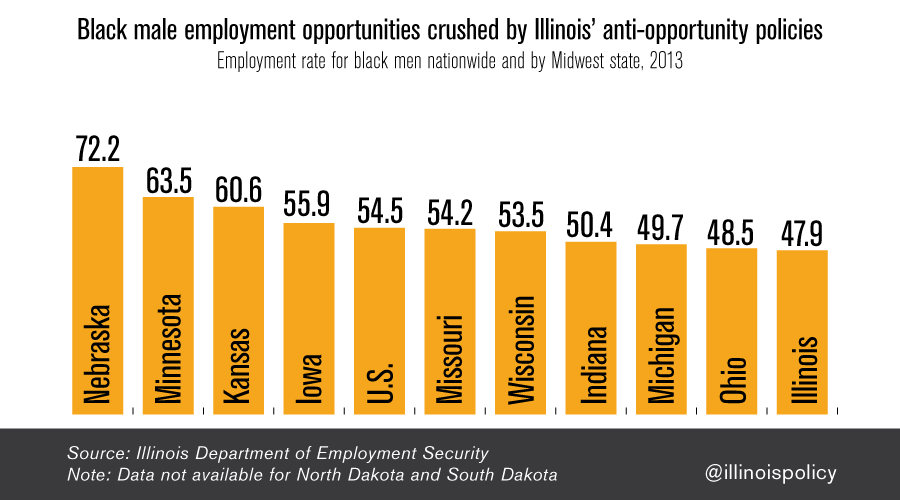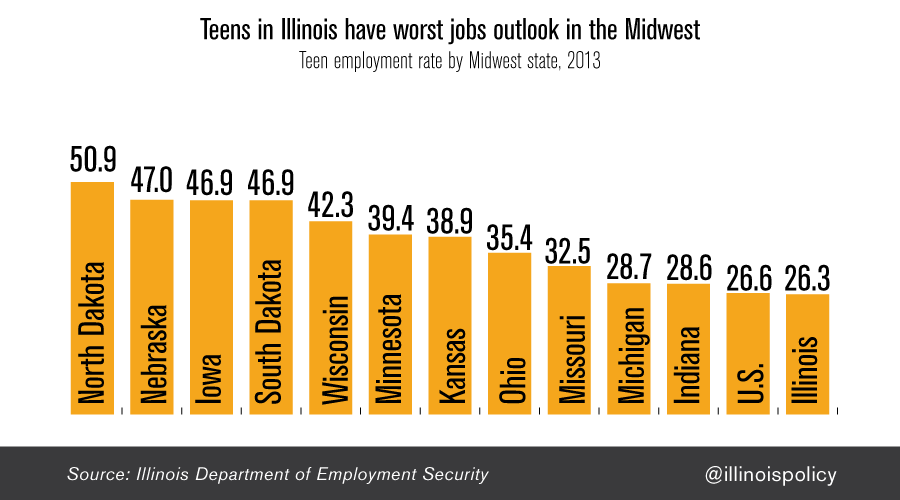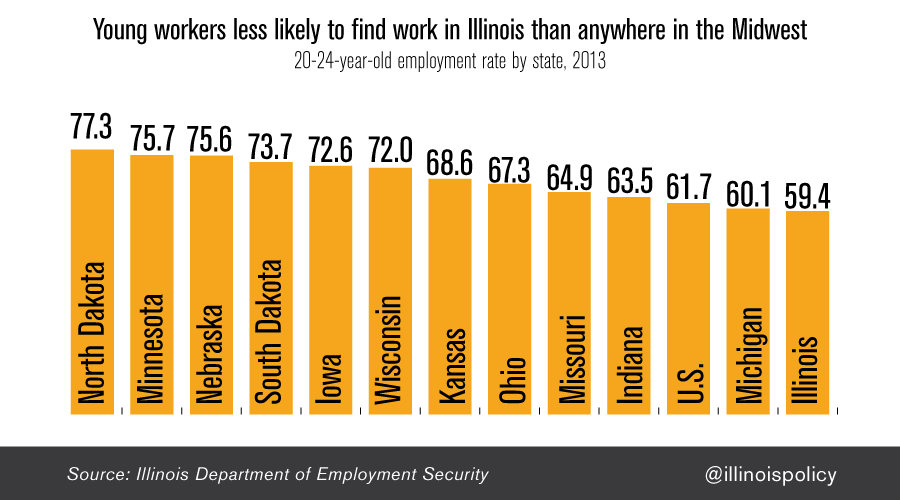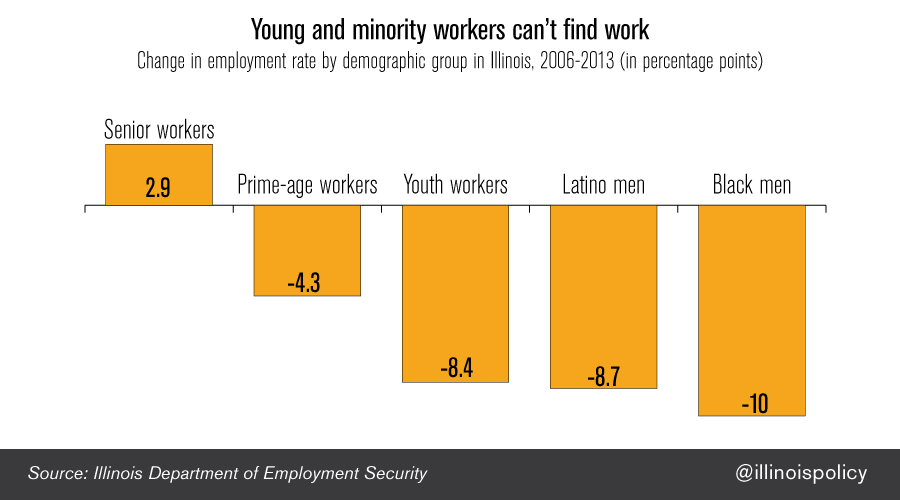Who’s hurting in Illinois?
The effects of the Great Recession still linger in Illinois, the pain of which has been distributed unevenly. Youth and minority workers have been hurt most by the state’s ongoing policy errors. The Great Recession caused employment losses across all demographic groups. Illinois’ policy mistakes and weak recovery – the worst in the U.S. –...
The effects of the Great Recession still linger in Illinois, the pain of which has been distributed unevenly. Youth and minority workers have been hurt most by the state’s ongoing policy errors.
The Great Recession caused employment losses across all demographic groups. Illinois’ policy mistakes and weak recovery – the worst in the U.S. – have compounded the effects of the Great Recession.
One policy mistake was the historic 2011 tax hikes, which dramatically slowed down job creation. Another mistake is having the highest minimum wage in the Midwest, a policy that has been proven to hurt employment among youths and minorities. In fact, a recent study at Cornell University showed that employment losses from minimum-wage hikes hit youth and black workers four times as hard the general population.
With so many policy errors, it’s no surprise that Illinois is now the worst state in the Midwest for black men to find work. Fewer than half of all adult black men can find work in Illinois.
Young workers have also taken a hit. Illinois has the worst employment rate in the Midwest for teenage workers age 16-19.
Illinois also has the worst employment rate in the Midwest for workers age 20-24.
In fact, almost everyone in Illinois has seen decreased employment opportunities since the Great Recession except for one group – senior workers. From 2006-2013, the employment rate for senior workers (age 55 and older) bumped up nearly three percentage points.
Every other age group had an employment rate collapse, and minority men felt the most devastating effects of the state’s weak economy.
Illinois is in need of serious economic reform. It’s clear that the state’s policies have not worked, especially for youth and minority workers. The only way to put the state back to work is through enacting policies that encourage entrepreneurship and take on structural reform that will foster economic growth.




